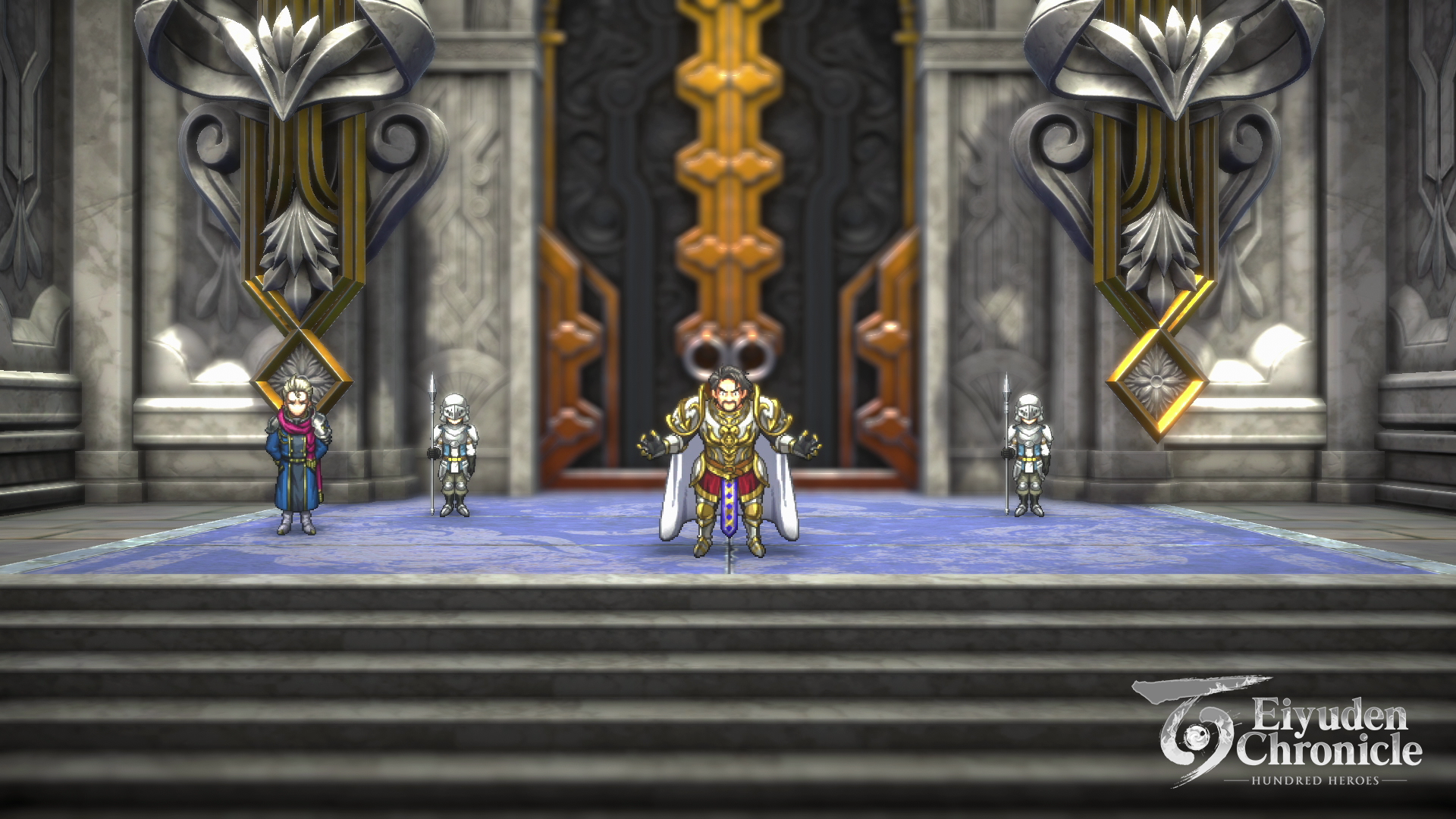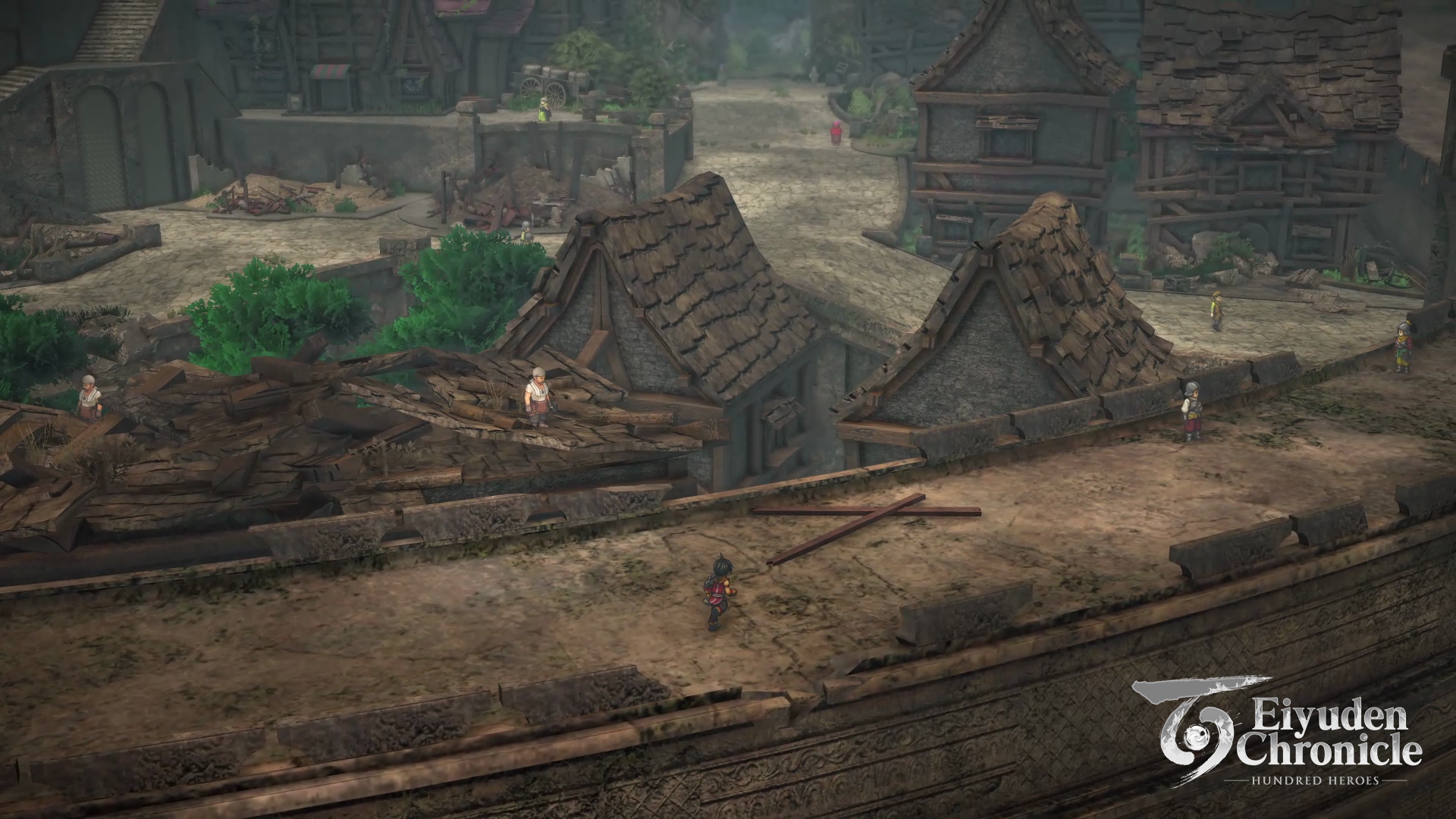![[Preview] Eiyuden Chronicle: Hundred Heroes [Preview] Eiyuden Chronicle: Hundred Heroes](https://tubemate.vip/wp-content/uploads/2023/12/Preview-Eiyuden-Chronicle-Hundred-Heroes-1024x576.jpg)
It always seems to happen the same way: just when I think I’m ready to take a break from playing big, sprawling JRPGs that threatens to suck up every ounce of my free time, along comes a game like Eiyuden Chronicle: Hundred Heroes that immediately makes me reconsider. After spending the past few years deep in development following an immensely successful Kickstarter campaign in 2020, the turn-based RPG will finally land on Switch next spring and will hopefully help scratch the Suikoden itch that Konami has ignored for over a decade. I was fortunate to have a chance to demo the game in Los Angeles recently, and while I only got to experience a small sliver of the opening chunk of the game, I really enjoyed what bits of the story, combat, and exploration I played.
Eiyuden Chronicle: Hundred Heroes’ big selling point is that it promises over 100 distinct potential allies who can be recruited as party members over the course of the game, each with their own story arcs and dialogue (and dubbed in both English and Japanese). My demo plopped me right at the start and quickly introduced me to my initial band of travelers; my favorites were Garr, a gruff anthropomorphic wolf-man, and Lian, a plucky soldier who the game affectionately describes as a “Full-Throttle Bomber Girl.” They, along with protagonist Nowa (who is a locked party member), are members of a group called The Watch –a group of soldiers-for-hire that have set up shop in the Galdean Empire. At the start of the demo, they team up with a battalion from the Imperial Army to venture into the nearby forest to investigate some mysterious ruins and locate a place called the Runebarrows. It was a fast-paced intro sequence, with each line of dialog doing something to help establish some background knowledge about the world, while also teasing some broader levels of political strife going on in the background.

Before leaving the town, I wandered through the streets a bit and chatted with a few NPCs who were going about their daily lives. It was a good chance to get a glimpse of the gorgeous art direction for this game’s environments – don’t call it HD-2D, because despite some similarities it feels quite distinct from the flavor of games like Octopath Traveler. The 2D pixel art characters visually pop from the 3D world environments quite spectacularly, and the relatively more grounded world design feels more like the kind of place I’d like to spend time in. The initial town I explored didn’t have much I could do during my demo, but I did pop into an inn – I was struck by the visual attention to detail, like the way dust particles could be seen floating around in the light beams shining through the window. A few cutscenes later and my merry band of mercs set off into the world.
An overworld map connects the various explorable destinations together, and while my demo only took me to a handful of places, the scope seems pretty huge. As I zoomed out on the map I could see broad swaths of woods, meandering rivers, a coastline, a mountain range, and what looked like towns scattered among all of it. Based on the amount of time it took me to travel to the Northern Forest, I get the sense the world will feel bigger than many might have anticipated.

Part of the reason my party ventured into the woods was to hopefully locate an object called the Primal Lens, which the game implies is a more powerful version of the Rune Lenses that all party members are equipped with, and which the Galdean Imperial Army has a vested interest in for reasons that aren’t immediately clear. In combat, Rune Lenses act as a fighter’s means to access their unique set of special abilities, which could be either magic or skill-based, pulling from either MP or SP. At least in the demo, that pool of SP in particular felt awfully small, which makes using one of these abilities feel like a big decision. Battle encounters occur at random – you can’t see foes wandering around in the overworld, either – so there’s an element of risk at play if you accidentally drain all your resources and then get thrust into a tough battle.
Granted, I had zero issues blazing through combat this early in the game, but I’m sure that will change with time. There’s also the option to have your characters auto-battle for you if you’re interested in blasting through fights with low-level canon fodder. It seemed to work well, and that was without me spending any time adjusting my party members’ battle tactics in the menu screens; I wonder how possible it will be to min-max strategies at that level for players like me who are desperate for anything even mildly approaching the Gambit system from Final Fantasy XII – although I’m certainly not expecting that level of depth (but would love to be surprised!)

The other component of combat that I glimpsed in menus but didn’t get to try for myself are Hero Combos, which are essentially ultra-powerful and flashy attacks that occur between two party members. The exact nature of a Hero Combo depends on who is in your party, and with over 100 recruitable party members in the game I’m eager to see just how it will be possible to mix and match everything.
Exploring the woods and the subsequent dungeon area called the Runebarrow was a very straightforward affair, with not a lot of immediate opportunities to stray too far off the designated path. Again, this was an early-game demo so that could change later on, but it’s hard to say for sure. I did find a few chests with some equipable gear and resources like lumber, but that was about it. The Runebarrow area was a bit more of a puzzle that involved locating and hitting certain switches to open a series of gates scattered about, but really the most fun part of exploring for me was just soaking in the art design and the soundscapes. There are a lot of little details that help make the world feel tangible, like the gentle chirps of cicadas at night, the flapping of capes and hair in the wind, and the energetic (but never distracting) soundtrack that really helped set the tone for whatever was going on.

I was also really impressed with what I saw of the writing. Many RPGs struggle to find the right balance between dumping lore, establishing characters, and driving the plot forward in the opening hours without overwhelming the player. To Eiyuden Chronicle’s credit, I felt like in the span of an hour I had a good sense for who my party was and what was going on without delaying the action too much, while still leaving plenty of room for character development over the course of the narrative. And there are some delightfully campy character quips that had me chuckling – like, why does Lian always say “Rub-a-dub-dub” so much? I don’t know, but for some reason it’s funny when combined with her animations and the relatively serious circumstances the party seems to be in, so I’m here for it.
There’s a lot more to do in Hundred Heroes than I got to see during my demo – there’s a town-building mechanic, minigames like fishing and cards, and a different mode called War Mode that seemingly has the player conducting large-scale tactical battles against opposing armies. So far, almost everything I’ve seen in Hundred Heroes is something I’ve seen in some form in other JRPGs, but I get the sense that some of the most exciting parts of the gameplay loop haven’t been revealed yet, so I think we’ll have to wait and see. Still, if the game can maintain the level of polish and fun that was present in my demo, I think there’s a lot of potential for Eiyuden Chronicle: Hundred Heroes to stand out among the crowd of big-budget winter RPGs as a bit of a different flavor. I’m looking forward to playing more when the game launches on April 23, 2024.